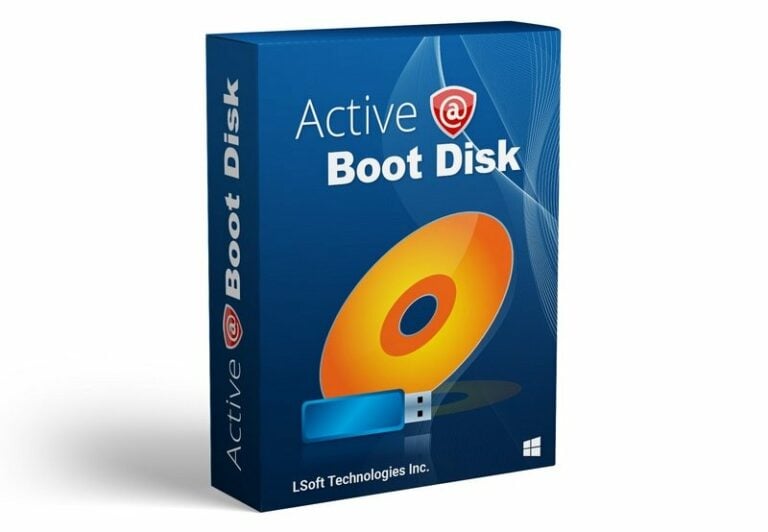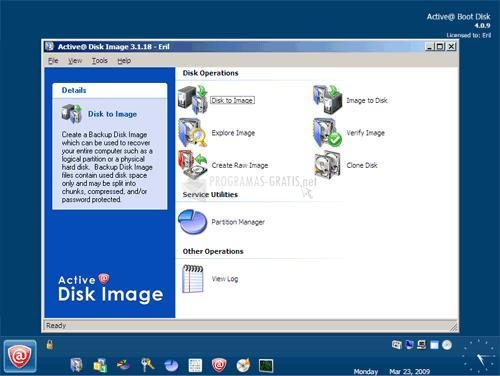
This version of DOS is generally referred to as "European MS-DOS 4" because it was developed for ICL and licensed to several European companies.

In the mid-1980s, Microsoft developed a multitasking version of DOS.
Active boot disk download full version Pc#
By the early 1990s, most PCs adhered to IBM PC standards so Microsoft began selling a retail version of MS-DOS, starting with MS-DOS 5.0.
Active boot disk download full version driver#
Microsoft provided an OEM Adaptation Kit (OAK) which allowed OEMs to customize the device driver code to their particular system. DOS was structured such that there was a separation between the system specific device driver code ( IO.SYS) and the DOS kernel ( MSDOS.SYS). One major reason for this was that not all early PCs were 100% IBM PC compatible. Microsoft originally sold MS-DOS only to original equipment manufacturers (OEMs). CP/M faded, with MS-DOS and PC DOS becoming the marketed operating system for PCs and PC compatibles. Side-by-side, CP/M cost US$200 more than PC DOS, and sales were low. IBM responded by offering an agreement: they would give PC consumers a choice of PC DOS or CP/M-86, Kildall's 8086 version. Digital Research became aware that an operating system similar to CP/M was being sold by IBM (under the same name that IBM insisted upon for CP/M), and threatened legal action. IBM continued to develop their version, PC DOS, for the IBM PC. Microsoft later required the use of the MS-DOS name, with the exception of the IBM variant. Within a year Microsoft licensed MS-DOS to over 70 other companies, which supplied the operating system for their own hardware, sometimes under their own names. This became Microsoft Disk Operating System, MS-DOS, introduced in 1981. Microsoft purchased 86-DOS, allegedly for US$50,000. The system was initially named QDOS (Quick and Dirty Operating System), before being made commercially available as 86-DOS. There, programmer Tim Paterson had developed a variant of CP/M-80, intended as an internal product for testing SCP's new 16-bit Intel 8086 CPU card for the S-100 bus. Gates in turn approached Seattle Computer Products. Digital Research founder Gary Kildall refused, and IBM withdrew. However, initial negotiations for the use of CP/M broke down: Digital Research wished to sell CP/M on a royalty basis, while IBM sought a single license, and to change the name to "PC DOS". IBM was then sent to Digital Research, and a meeting was set up. Chairman John Opel had a conversation with fellow United Way National Board Executive Committee member Mary Maxwell Gates, who referred Opel to her son Bill Gates for help with an 8088-compatible build of CP/M. When IBM introduced the IBM PC, built with the Intel 8088 microprocessor, they needed an operating system. It was developed to be similar to Digital Research's CP/M-the dominant disk operating system for 8-bit Intel 8080 and Zilog Z80 microcomputers-in order to simplify porting CP/M applications to MS-DOS. IBM PC DOS (and the separately sold MS-DOS) and its predecessor, 86-DOS, ran on Intel 8086 16-bit processors. Others include Apple DOS, Apple ProDOS, Atari DOS, Commodore DOS, TRSDOS, and AmigaDOS.įurther information: Comparison of DOS operating systems and Timeline of DOS operating systems Origins Apple CP/M from Digital Research on a Z-80 SoftCard for the Apple II

Dozens of other operating systems also use the acronym, beginning with the mainframe DOS/360 from 1966. MS-DOS dominated the IBM PC compatible market between 19.Īlthough the name has come to be identified specifically with this particular family of operating systems, DOS is a platform-independent acronym for disk operating system, whose use predates the IBM PC. Later compatible systems from other manufacturers include DR-DOS (1988), ROM-DOS (1989), PTS-DOS (1993), and FreeDOS (1998). The DOS family primarily consists of Microsoft's MS-DOS and a rebranded version, IBM PC DOS, both of which were introduced in 1981. The boot screen and command-line interface of MS-DOS 6, with an example of its directory structure The boot screen and command-line interface of FreeDOS, showing version information and an example of its directory structureĭOS ( / d ɒ s/, / d ɔː s/) is a family of disk-based operating systems for IBM PC compatible computers. Not to be confused with Microsoft Windows.


 0 kommentar(er)
0 kommentar(er)
